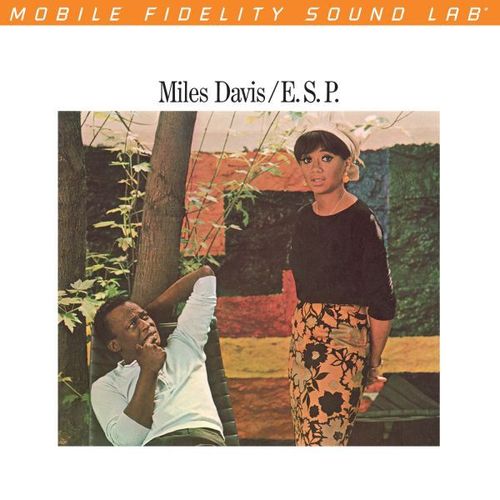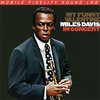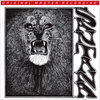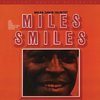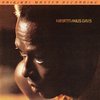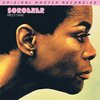Mobile Fidelity - MFSL 2-451 - 180 Gram Virgin Vinyl -
Numbered Limited Edition - Pressed at RTI
Mastered by Kreig Wunderlich
1/4" / 15 IPS analog copy to DSD 256 to analog console to lathe
The Absolute Sound Super Disc List TAS Harry Pearson Super LP List
Mobile Fidelity's 45rpm two-disc vinyl reissue—mastered from the original ¼-inch, 15ips, two-track tapes by Krieg Wunderlich—captures the sound's bloom and detail with more warmth and detail than any previous pressing, including Columbia's original. Miles' "second great quintet," as this group is called, recorded six albums from 1965-68—after E.S.P., there were Miles Smiles, Sorcerer, Nefetiti, Miles in the Sky, and Filles de Kilimanjaro. All of them are vital assets of any jazz collection, and MoFi's 45rpm pressings (which exist for all the titles except Miles Smiles, and I hope it's on the way) are the best way to hear them- www.stereophile.com
ESP marks the beginning of a revitalization for Miles Davis, as his second classic quintet -- saxophonist Wayne Shorter, pianist Herbie Hancock, bassist Ron Carter, and drummer Tony Williams -- gels, establishing what would become their signature adventurous hard bop. Miles had been moving toward this direction in the two years preceding the release of ESP and he had recorded with everyone outside of Shorter prior to this record, but his addition galvanizes the group, pushing them toward music that was recognizably bop but as adventurous as jazz's avant-garde.
Outwardly, this music doesn't take as many risks as Coltrane or Ornette Coleman's recordings of the mid-'60s, but by borrowing some of the same theories -- a de-emphasis of composition in favor of sheer improvisation, elastic definitions of tonality -- they created a unique sound that came to define the very sound of modern jazz. Certainly, many musicians have returned to this group for inspiration, but their recordings remain fresh, because they exist at this fine dividing line between standard bop and avant.
Landmark 1965 Recording Splits Divide Between Accessible Hard-Bop and Cutting-Edge Improvisation: Miles Davis' E.S.P. a Paragon of Cohesion, Chemistry, Interplay
Pressed at RTI, Mobile Fidelity's Reference-Caliber 45RPM Vinyl 2LP Set Presents the Music In Intimate, Transformational, Lifelike Sound
First Album Recorded by Davis' Classic Second Quintet: E.S.P. Teems With Brilliant Intensity, Energy, Emotion, Steadiness, Tension, and Interplay
A landmark recording and masterful symphony of performance, composition, and execution, Miles Davis' E.S.P. established the template jazz would follow for the following decade. The 1965 record splits the gap between accessible hard-bop and the cutting-edge approach Davis increasingly pursued into the 1970s. Adventurous, sophisticated, and yet altogether cohesive, E.S.P. stands out not only due to its elastic compositions but via its chemistry, interplay, and feeling attained by the instrumentalists. The first album Davis' classic second quintet made together, it's also very arguably the group's best. Never before has the effort been experienced in such transformational sound.
Pressed at RTI, Mobile Fidelity's 180g 45RPM 2LP set of E.S.P. treats each phrase and every note as sacred communication. This meticulously restored audiophile version renders the music's dynamics, pitch, colors, and textures with lifelike realism and proper scale. Reference-caliber separation, wall-to-wall soundstages, and distinct images magnify the intensity and beauty of Davis and Co.'s creations. Whether it's the distinctive snap of Tony Williams' drum sticks against the snare head, air moving through Davis' trumpet, acoustic thrum of Ron Carter's bass, or upper register of Herbie Hancock's piano, the sound is better than you'd even hear in the most intimate jazz clubs. Prepare to be swayed on every level.
For many, E.S.P. looms among the decade's best albums if only because of the significance of Davis' lineup. While Hancock, Williams, and Carter are holdovers that began playing with one another on 1963's Seven Steps to Heaven, Wayne Shorter functions as the secret weapon and key addition responsible for this ensemble hitting a new peak. Indeed, the saxophonist helped pen two of the seven compositions here – notably, E.S.P. is entirely comprised originals and clocked in as one of the longest-running jazz LPs issued at the time – and, more importantly, grants Davis the confidence and leeway necessary for the eruption of enigma, steadiness, and tension.
As he did with John Coltrane year earlier, Davis hangs back and picks his moments to solo, with Shorter stepping up to supply the churn. Their bandmates respond in kind, itching to take off into new stratospheres all the while keeping their improvisations grounded and connected to the piece at hand. Guided by Davis' visions and inspired by current boundary-pushing works by the likes of Ornette Coleman, Cecil Taylor, and Coltrane, the magnificent results spark with variation, harmony, emotion, energy, and brilliant movement.
Interlocking lines drive "Little One," alternating rhythms pulse through the funky "Eighty-One," melodies soar on the balladic "Iris," the aptly titled "Mood" broods over minor-key structures, and "Agitation" – goosed by a two-minute percussive introduction by Williams – delivers on its promise. No record – and no group of musicians – have ever balanced coherent themes and exploratory playing in better fashion than Davis' quintet on E.S.P.
It's the avant-garde record even jazz traditionalists love, and essential on every level.
Musicians:
Miles Davis (trumpet)
Wayne Shorter (tenor saxophone)
Herbie Hancock (piano)
Ron Carter (double bass)
Tony Williams (drums)
Miles Davis E.S.P. Track Listing:
1. E.S.P.
2. Eighty-One
3. Little One
4. R.J.
5. Agitation
6. Iris
7. Mood


GAIN 2 Ultra Analog™ is a proprietary cutting system built and designed by legendary design genius Tim De Paravicini, with consultation from one of MFSL’s founding fathers – Stan Ricker, an audio engineer responsible for many of MFSL’s most heralded past releases.
The GAIN 2 Ultra Analog™ system is comprised of a Studer™ tape machine with customized reproduction electronics* and handcrafted cutting amps that drive an Ortofon cutting head on a restored Neumann VMS-70 lathe. (*It is worth noting that independent studies have confirmed that the GAIN 2 Ultra Analog™ system can unveil sonic information all the way up to 122kHz!)
First and foremost, we only utilize first generation original master recordings as source material for our releases. We then play back master tapes at half speed enabling the GAIN 2 Ultra Analog™ system to fully extract the master’s sonic information. Our lacquers are then plated in a specialized process that protects transients in the musical signal. (Due to this process, there may be occasional pops or ticks inherent in initial play back, but as the disc is played more, a high quality stylus will actually polish the grooves and improve the sound). We further ensure optimum sound quality by strictly limiting the number of pressings printed for each release. These limited editions, in addition to being collectors’ items, ensure that the quality of the last pressing matches the quality of the first.
As you can imagine, all these efforts involve a tremendous amount of time, technology, cost and effort. The introduction of GAIN 2 Ultra Analog™ maintains Mobile Fidelity Sound Lab’s position as the world’s leading audiophile record label, where a passion for music with extraordinary sound quality matters most.
